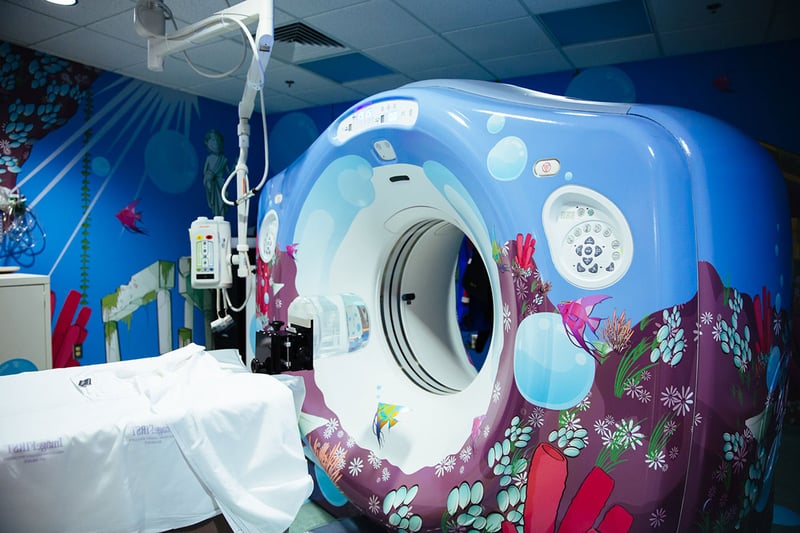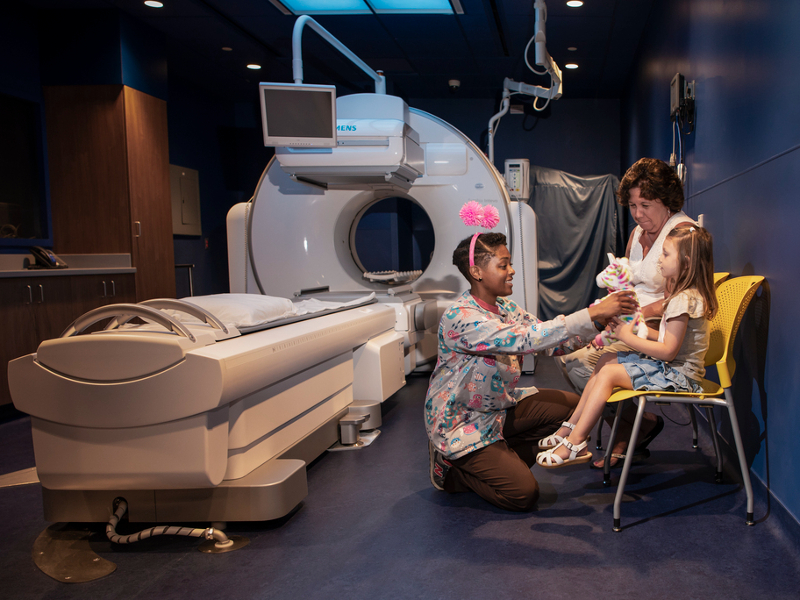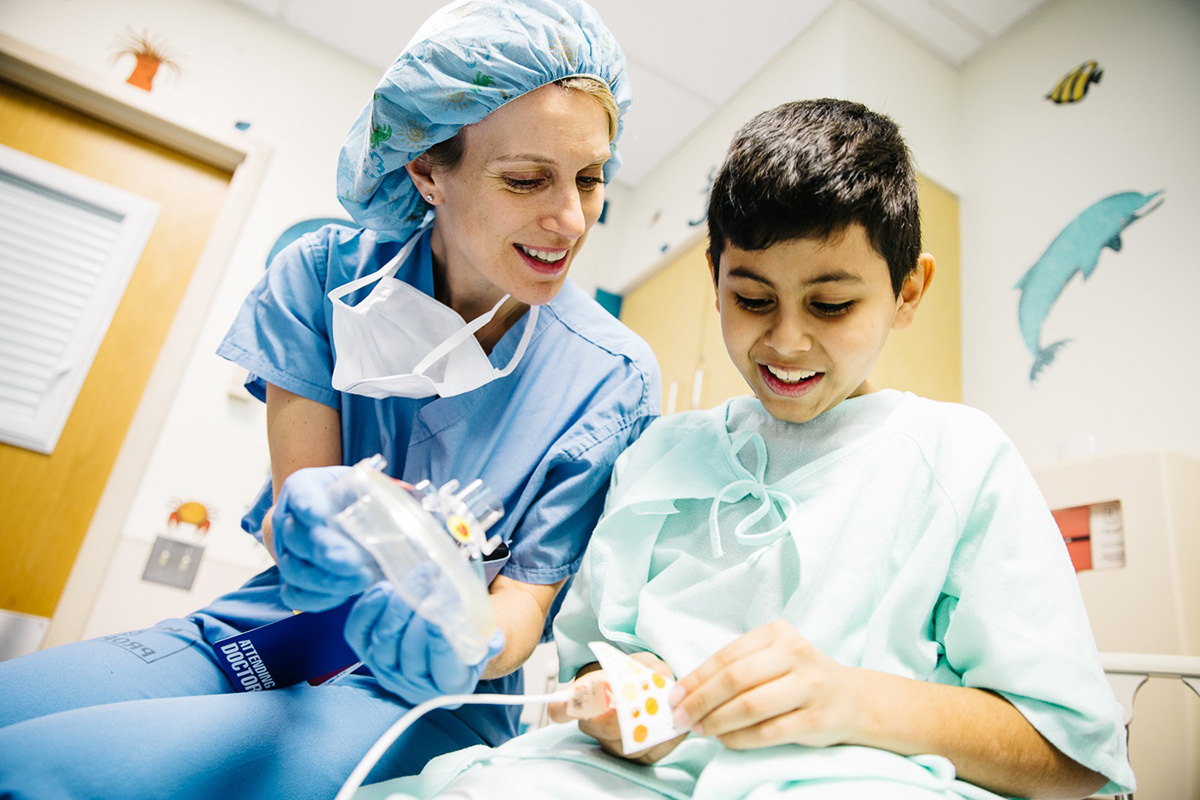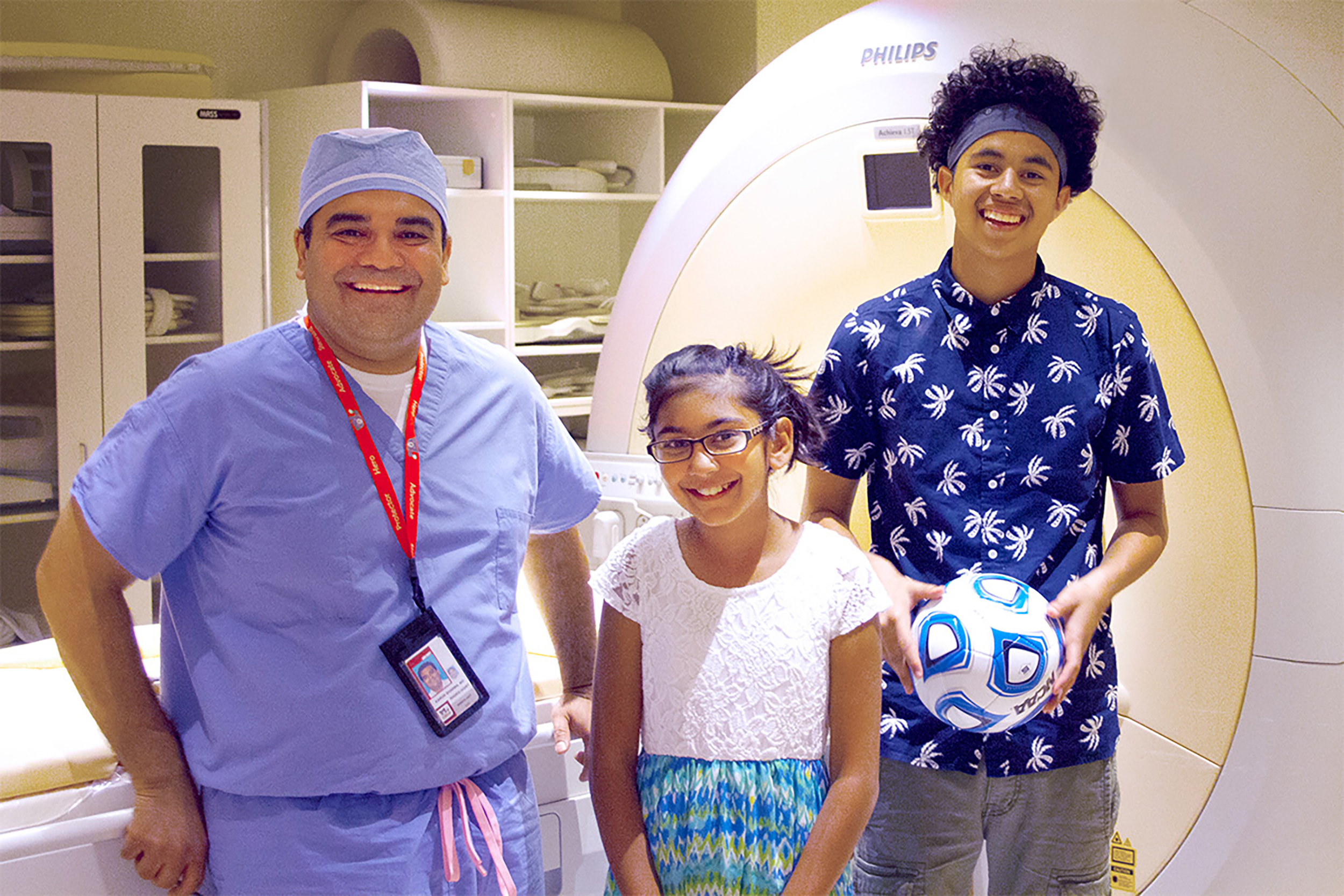Treatment
Pediatric Magnetic Resonance Imaging (MRI)
Magnetic resonance imaging (MRI) is a procedure that uses a large magnet, radio waves and a computer to create detailed images of organs and tissues in the body. It’s used to diagnose problems in many areas of the body.
There are different types of MRI machines. Some look like narrow tunnels. Others are more open and may be a choice for children who can’t handle small, confined spaces. The machine creates a strong magnetic field, which works with radio waves to change the position of the body’s hydrogen atoms. As they go back into correct position, they send out signals. A computer receives the signals and converts them into images of the body. This image appears on a computer screen.
Frequently Asked Questions
Why might my child need an MRI?
What are the risks of an MRI in children?
How do I help my child prepare for an MRI?
What happens during an MRI in children?
What happens after an MRI in a child?

Diagnostic Imaging and Radiology at Children's National Hospital
Our patient and family-centered facility has the most advanced radiology equipment in an environment designed for infants, children and adolescents. Discover more about the services we offer.

 Aasha's Rare Gift Will Help Other Babies Grow up Healthy
Aasha's Rare Gift Will Help Other Babies Grow up HealthyTesting the descrption field
Departments that Offer Magnetic Resonance Imaging (MRI)

Sarcoma Surgery
Surgeons at Children’s National perform biopsies, tumors removals and other procedures at a high volume, collaborating with experts in oncology, musculoskeletal radiology, pathology, radiation oncology, genetics, physical therapy and psychology. Their wealth of experience directly translates into superior skill and enables them to treat every type of tumor, even the most complex.










